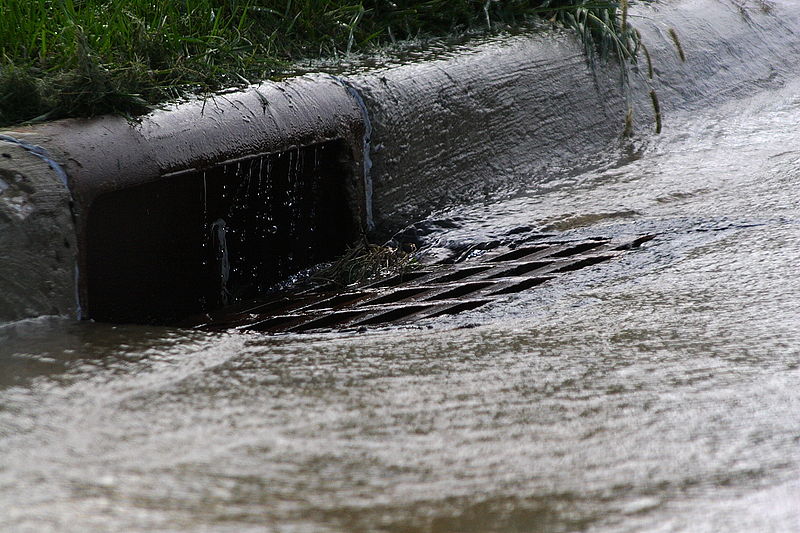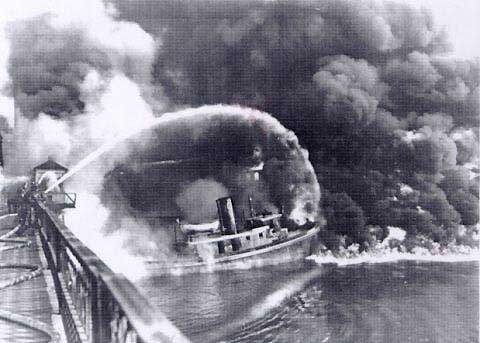| << Chapter < Page | Chapter >> Page > |
A septic tank system is an individual sewage treatment system for homes in rural and even some urban settings. The basic components of a septic tank system (see Figure Septic System ) include a sewer line from the house, a septic tank (a large container where sludge settles to the bottom and microorganisms decompose the organic solids anaerobically), and the drain field (network of perforated pipes where the clarified water seeps into the soil and is further purified by bacteria). Water pollution problems occur if the septic tank malfunctions, which usually occurs when a system is established in the wrong type of soil or maintained poorly.

For many developing countries, financial aid is necessary to build adequate sewage treatment facilities; however, the World Health Organization estimates an estimated cost savings of between $3 and $34 for every $1 invested in clean water delivery and sanitation ( Water for Life, 2005 ). The cost savings are from health care savings, gains in work and school productivity, and deaths prevented. Simple and inexpensive techniques for treating water at home include chlorination, filters, and solar disinfection. Another alternative is to use constructed wetlands technology (marshes built to treat contaminated water), which is simpler and cheaper than a conventional sewage treatment plant.
Bottled water is not a sustainable solution to the water crisis, despite exponential growth in popularity in the U.S. and the world. Bottled water is not necessarily any safer than the U.S. public water supply, it costs on average about 700 times more than U.S. tap water, and every year it uses approximately 200 billion plastic and glass bottles that have a relatively low rate of recycling. Compared to tap water, it uses much more energy, mainly in bottle manufacturing and long-distance transportation. If you don’t like the taste of your tap water, then please use a water filter instead of bottled water!

Additional sustainable solutions to the water pollution crisis include legislation to eliminate or greatly reduce point sources of water pollution. In the U.S., the Clean Water Act of 1972 and later amendments led to major improvements in water quality (see Sidebar Clean Water Act ). Nonpoint sources of water pollution, e.g., agricultural runoff and urban runoff (see Figure Storm Drain ), are much harder to regulate because of their widespread, diffuse nature. There are many construction and agricultural practices that reduce polluted runoff including no-till farming and sediment traps. Artificial aeration or mechanical mixing can remediate lakes with oxygen depletion. Specific things that we can do to reduce urban runoff include the following: keep soil, leaves, and grass clippings off driveways, sidewalks, and streets; don't pour used motor oil, antifreeze, paints, pesticides, or any household hazardous chemical down the storm sewer or drain; recycle used motor oil; use hazardous waste disposal programs offered by the community; compost your organic waste; don't use fertilizers and herbicides on your lawn; and flush pet waste down the toilet.
During the early 1900s rapid industrialization in the U.S. resulted in widespread water pollution due to free discharge of waste into surface waters. The Cuyahoga River in northeast Ohio caught fire numerous times (see Figure Cuyahoga River on Fire ), including a famous fire in 1969 that caught the nation’s attention. In 1972 Congress passed one of the most important environmental laws in U.S. history, the Federal Water Pollution Control Act, which is more commonly called the Clean Water Act. The purpose of the Clean Water Act and later amendments is to maintain and restore water quality, or in simpler terms to make our water swimmable and fishable. It became illegal to dump pollution into surface water unless there was formal permission and U.S. water quality improved significantly as a result. More progress is needed because currently the EPA considers over 40,000 U.S. water bodies as impaired, most commonly due to pathogens, metals, plant nutrients, and oxygen depletion. Another concern is protecting groundwater quality, which is not yet addressed sufficiently by federal law.

Sometimes slow flow through a soil can naturally purify groundwater because some pollutants, such as P, pesticides, and heavy metals, chemically bind with surfaces of soil clays and iron oxides. Other pollutants are not retained by soil particles: These include N, road salt, gasoline fuel, the herbicide atrazine, tetrachloroethylene (a carcinogenic cleaning solvent used in dry cleaning), and vinyl chloride. In other cases, slow groundwater flow can allow bacteria to decompose dead organic matter and certain pesticides. There are many other ways to remediate polluted groundwater. Sometimes the best solution is to stop the pollution source and allow natural cleanup. Specific treatment methods depend on the geology, hydrology, and pollutant because some light contaminants flow on top of groundwater, others dissolve and flow with groundwater, and dense contaminants can sink below groundwater. A common cleanup method called pump and treat involves pumping out the contaminated groundwater and treating it by oxidation, filtration, or biological methods. Sometimes soil must be excavated and sent to a landfill. In-situ treatment methods include adding chemicals to immobilize heavy metals, creating a permeable reaction zone with metallic iron that can destroy organic solvents, or using bioremediation by adding oxygen or nutrients to stimulate growth of microorganisms.
What are the major kinds of water pollutants and how do they degrade water quality?
How would you rank the water pollution problems described in this chapter? Why?
Why is untreated sewage such an important water pollutant to remediate?
What should society learn from the case history of Love Canal?
Why are people facing a crisis involving water pollution and how can we solve it?
Water for Life: Making it Happen (2005) World Health Organization and UNICEF. Retrieved from (External Link)
World Health Statistics (2010) World Health Organization. Retrieved from (External Link)

Notification Switch
Would you like to follow the 'Sustainability: a comprehensive foundation' conversation and receive update notifications?